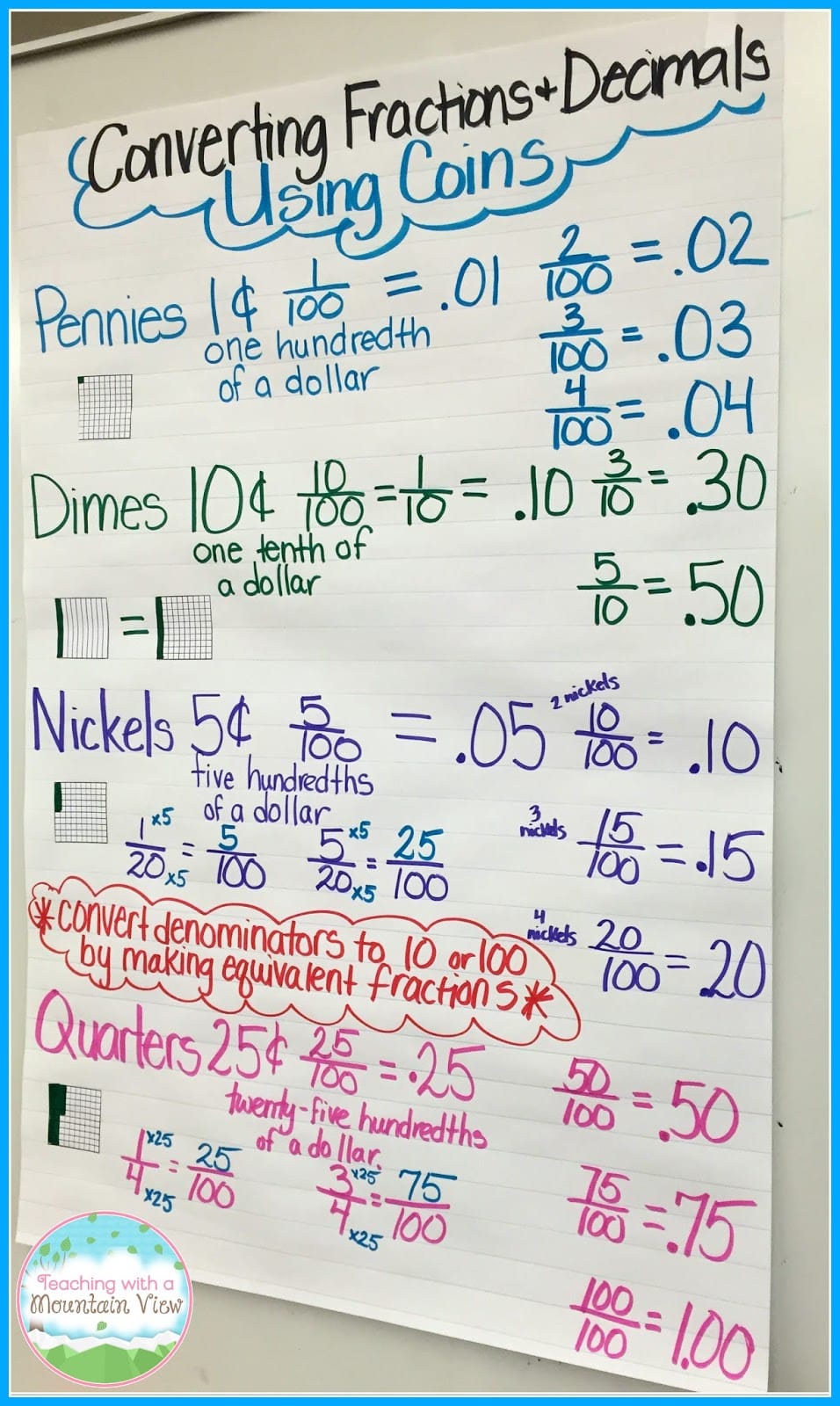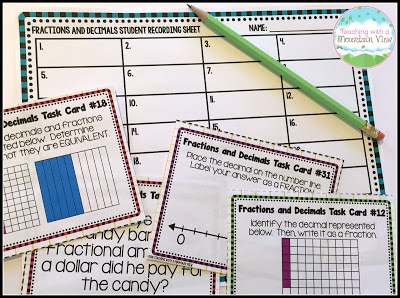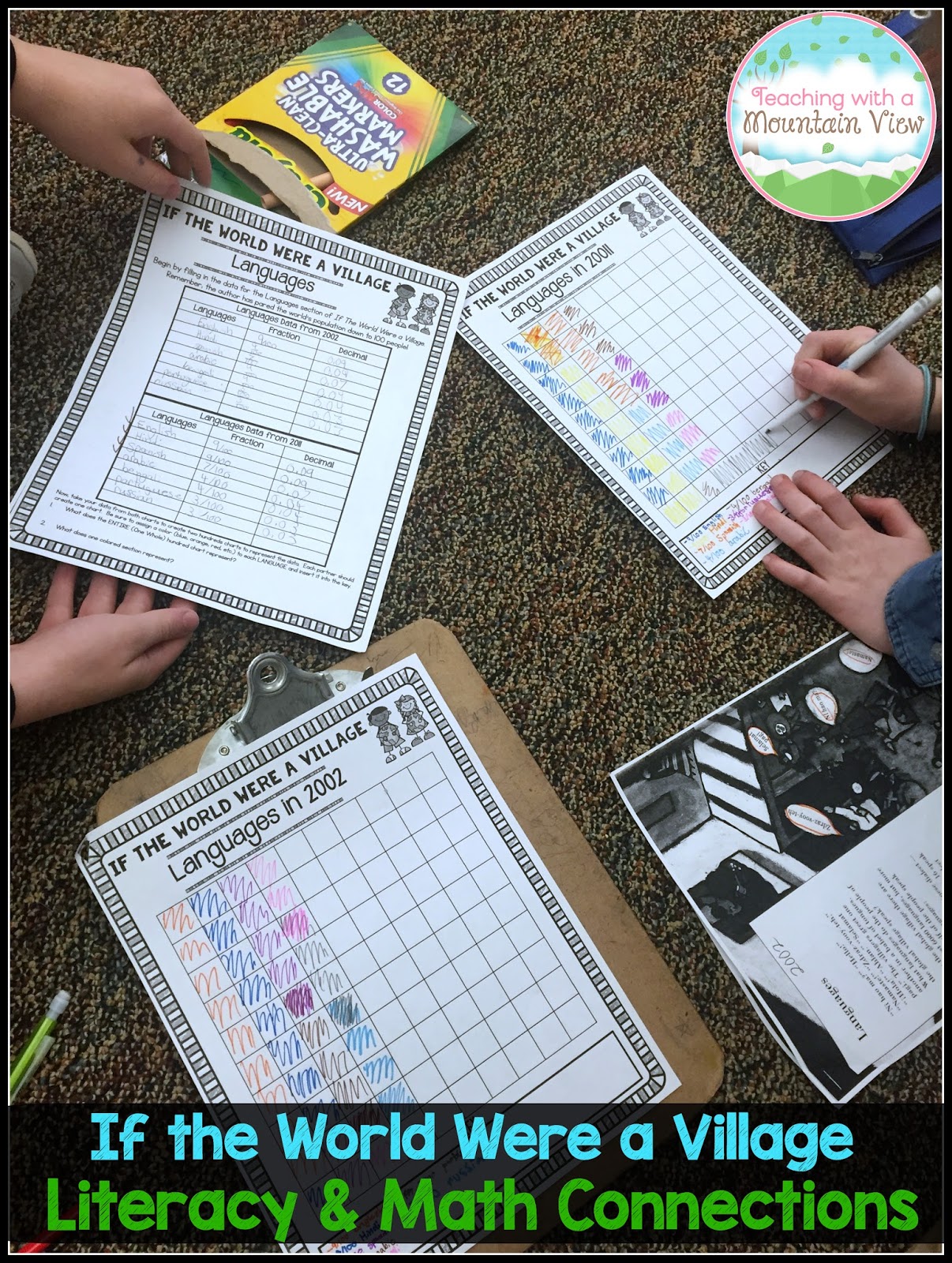- Anchor Charts
- |
- Decimals
- |
- Fractions
- |
- Free
- |
- Math
- |
- Math Anchor Charts
Converting Fractions to Decimals
By Mary Montero
Share This Post:

I’m stopping in quickly (time is so short these days!) to share an anchor chart I made with my students during a lesson about converting fractions and decimals.
I debated how to introduce this skill, but I decided to use good old coins! They had the background knowledge they needed and it would be in a familiar format.
You know how sometimes you are in the middle of a lesson and you think to yourself, “MAN I wish administration would walk in right now!”? This was one of those lessons.

This anchor chart looks pretty darn busy now that it’s done, but when I started teaching the lesson, it was a blank canvas. I stepped them through every single note that’s on this anchor chart, and you can see how we progressed through the skill.
I started off by asking them to tell me the value of a dollar bill. One, of course. I then asked them the value of a penny. One, of course! Except… nope! We talked through the value of a penny in relation to a WHOLE dollar. They deduced that there are 100 parts in a whole dollar in relation to a penny. We wrote the fraction and we wrote it out in words. Then, we wrote it as a decimal. We did a few more examples (2 pennies, 3 pennies, etc.) and glued a 100 chart to represent the value of one penny.
We continued down this same path for dimes, then nickels, and then quarters. When we got to quarters, I started showing them how to convert fractions so that they have a denominator of 10 or 100. This was the most logical place for me to do this since they were all familiar with the idea that 1/4 of a dollar is one quarter.
The whole lesson was only about 20 minutes, but we were at near complete mastery of the skill. It was so easy for them to visualize this way. I definitely left the lesson feeling so pleased with the way it had gone!
Afterwards, I gave them some decimal cards to make basic charts in their notebooks with visuals, fractions, and decimals. They were so thrilled with themselves for finding success so quickly.
We don’t have much more practice to do with this, so I made a new set of task cards to play two quick games of SCOOT with them. These task cards are a perfect option for SCOOT because they are very quick to solve. The first set is identifying and the second set has them adding.
Click HERE to see the task cards at my TpT store.You can also read about the FREE follow up activity I did to this lesson HERE!
Mary Montero
I’m so glad you are here. I’m a current gifted and talented teacher in a small town in Colorado, and I’ve been in education since 2009. My passion (other than my family and cookies) is for making teachers’ lives easier and classrooms more engaging.













